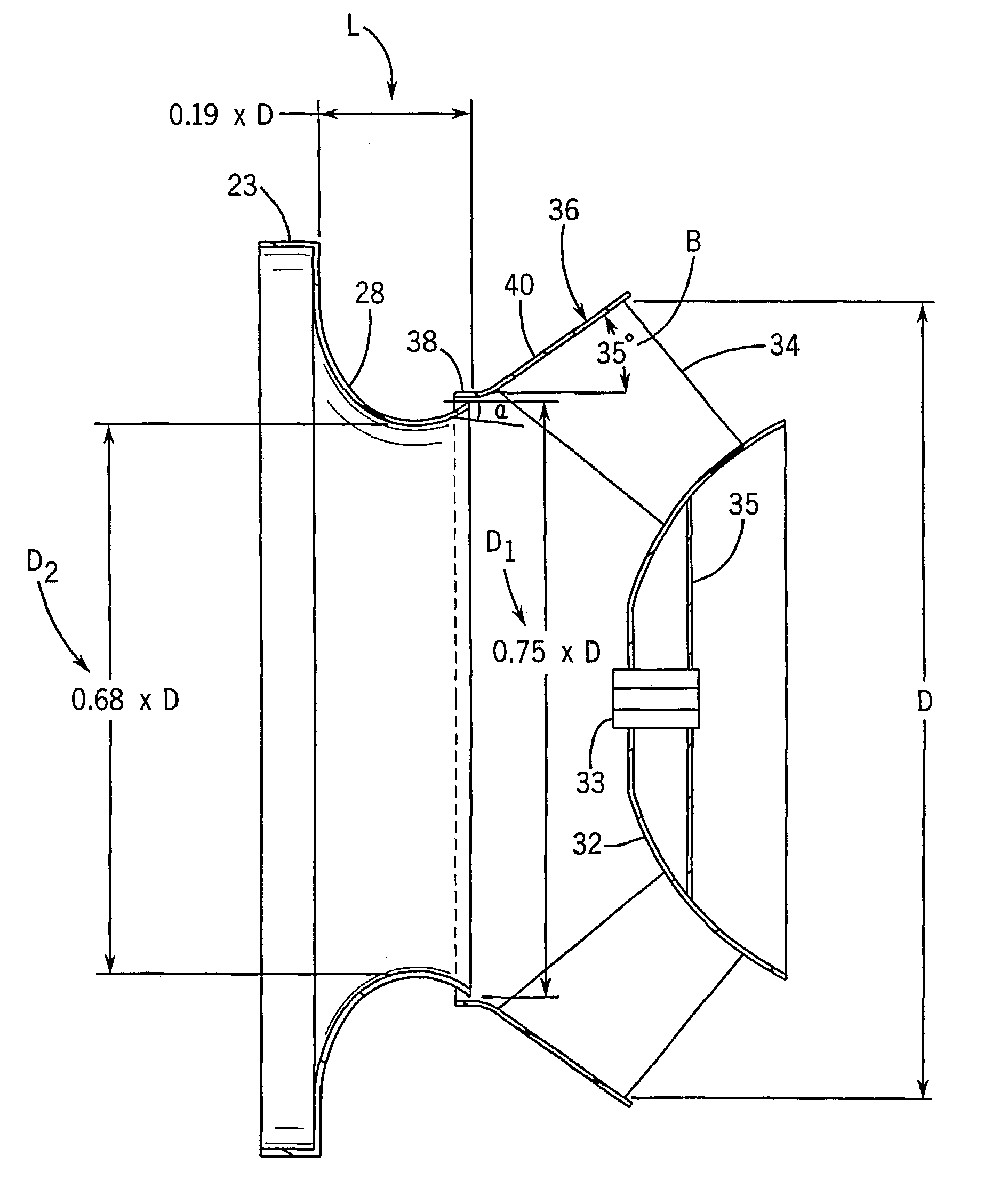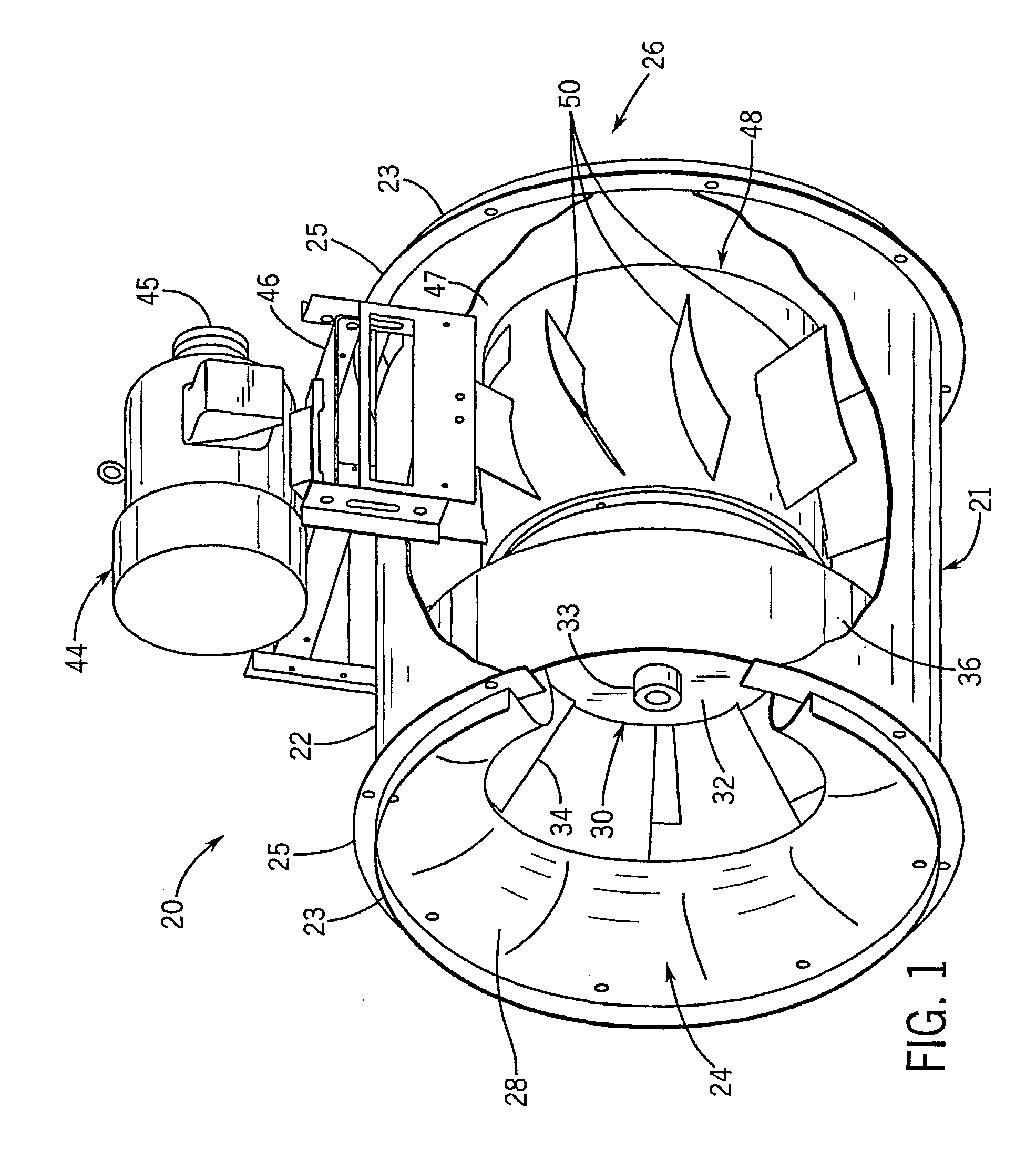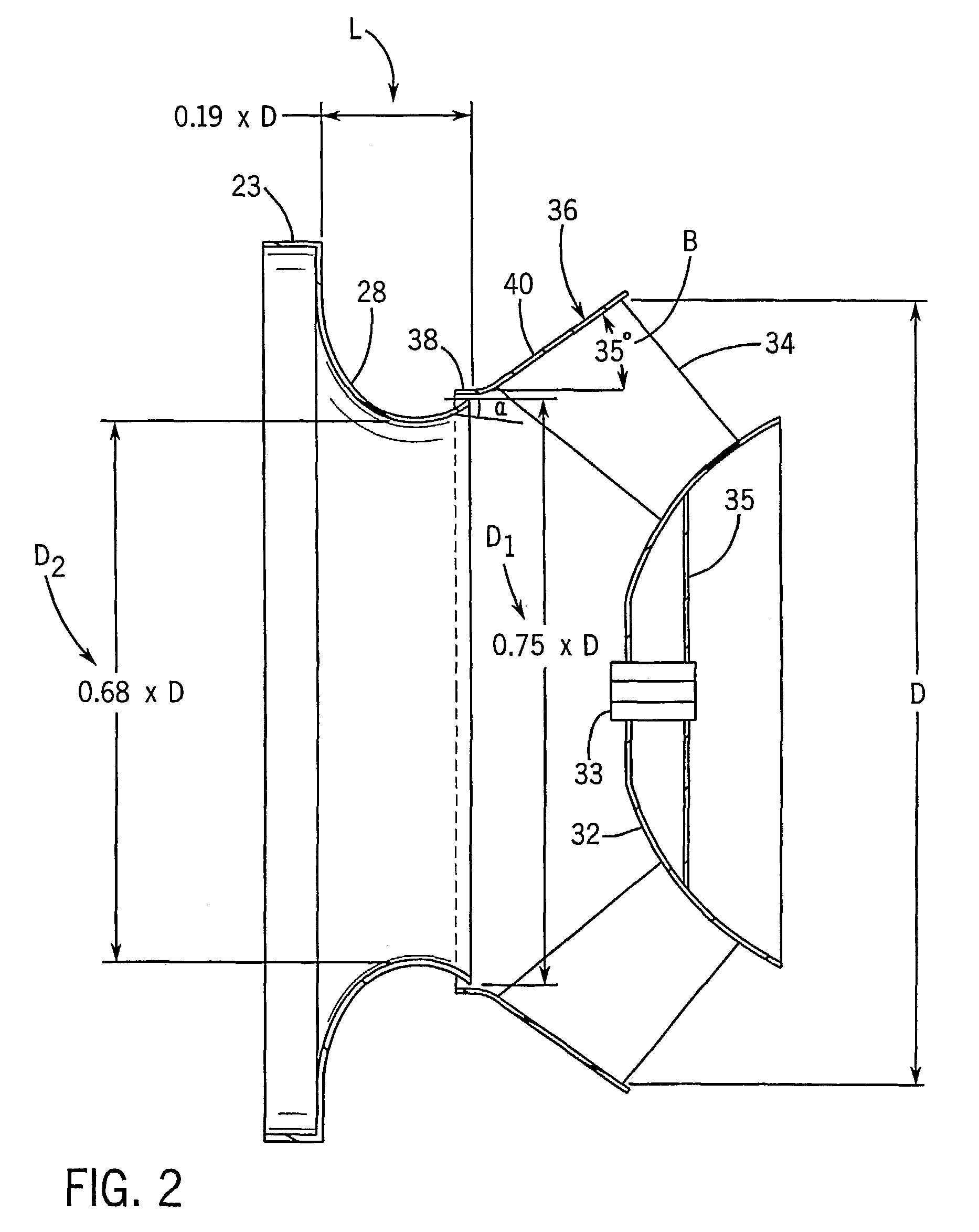In-line centrifugal fan
a centrifugal fan and inline technology, applied in the direction of marine propulsion, vessel construction, other chemical processes, etc., can solve the problems of requiring reinstallation of non-modular moveable parts, affecting the efficiency of the system, so as to achieve the effect of convenient installation and service, improved efficiency and less nois
- Summary
- Abstract
- Description
- Claims
- Application Information
AI Technical Summary
Benefits of technology
Problems solved by technology
Method used
Image
Examples
Embodiment Construction
[0042]Referring initially to FIGS. 1 and 4, an in-line centrifugal fan 20, preferably a mixed flow fan, includes a housing 21 defining an annular conduit 22. The conduit 22 includes an air intake end 24 that receives air to be circulated, and an air outlet end 26 downstream of the intake end that expels the air from the fan at a predetermined flow rate. While the fan 20 is a mixed flow fan, it should be appreciated throughout this description that the terms “upstream” and “downstream” are used herein with respect to the flow of air through fan 20 in the axial direction from the intake end 24 towards the outlet end 26. An electric motor 44 is mounted onto the upper surface of housing 21 via a mounting bracket 46 and, during operation, rotates a drive pulley 45 at a predetermined rate. A drive belt (not shown) translates the power from the drive pulley 45 to rotate the corresponding internal components of fan 20, thus circulating air throughout, for example, a building. It should be a...
PUM
 Login to View More
Login to View More Abstract
Description
Claims
Application Information
 Login to View More
Login to View More - R&D
- Intellectual Property
- Life Sciences
- Materials
- Tech Scout
- Unparalleled Data Quality
- Higher Quality Content
- 60% Fewer Hallucinations
Browse by: Latest US Patents, China's latest patents, Technical Efficacy Thesaurus, Application Domain, Technology Topic, Popular Technical Reports.
© 2025 PatSnap. All rights reserved.Legal|Privacy policy|Modern Slavery Act Transparency Statement|Sitemap|About US| Contact US: help@patsnap.com



